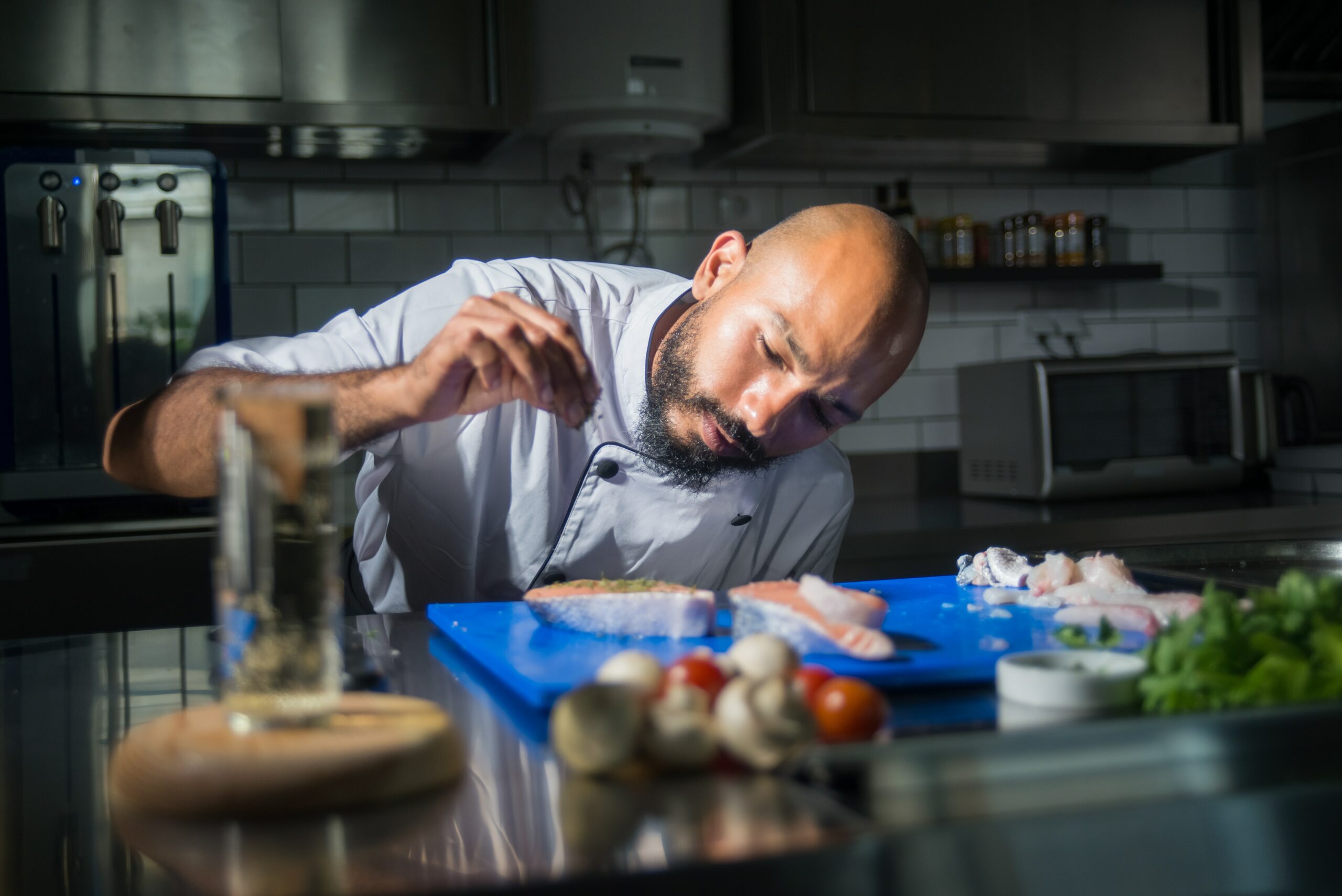4 Modern Italian Chefs
In Italian culture, the significance of food goes far beyond the physical necessity of eating. For Italians, the family is the foundation of society and the center of social life. Italians believe in relaxing and enjoying their food, with meals often lasting two or three hours and consisting of many courses. Unlike the French, who have long prided themselves on their gourmet cuisine, Italian cooks have traditionally focused on creating simple, home-style dishes using high quality, fresh ingredients. Italian cuisine tends to be very regional, with traditional dishes and ingredients varying between provinces. Italy is a country steeped in tradition, which can make it difficult for adventurous gourmet chefs to gain acceptance locally. In recent decades, l’alta cucina has challenged the boundaries of Italian cuisine, with chefs serving up fantastic and unusual dishes in some of the most celebrated restaurants in Italy. Italy is full of people who take their craft very seriously, and the chefs listed below are certainly no exceptions.
1 Gualtiero Marchesi
Photo: br1dotcomGualtiero Marchesi is the first non-French chef to be awarded three stars by the Michelin Red guide, one of Europe’s best-known restaurant and hotel guides. As a young man, Marchesi worked in the restaurants Ledoyen, Le Chapeau Rouge and Troisgros, in Paris, Dijon and Roanne, respectively. His eponymous first restaurant was opened in Milan in 1977, and in 1993 moved to the territory of Franciacorta, in Lombardy. Marchesi is a legend among Italian chefs and the recipient of numerous awards and titles from Italian and international organizations, including the Grand Prix Mémoire et Gratitude from the International Academy of Gastronomy. Marchesi is Rector of Alma, the international school of Italian cuisine, situated near Parma.
2 Carlo Petrini
Photo: br1dotcomCarlo Petrini was born in the province of Cuneo, which lies in the region of Piedmont, in northwestern Italy. Petrini is the founder of the Slow Food Movement. Prompted by the opening of a McDonald’s near the Spanish Steps in Rome, the Slow Food Movement was begun in 1986 to protest globalization and the fast food phenomenon. Slow Food promotes traditional, regional produce and cuisine, stressing the importance of local economies and the connection between gastronomy and ecology. Petrini founded the University of Gastronomic Sciences in 2004, located in his native community of Bra, Italy.
3 Massimo Bottura
Photo: br1dotcomMassimo Bottura is the 2011 recipient of the International Academy of Gastronomy’s Gran Prix de l’Art de la Cuisine award for his excellent avant-garde cuisine. Bottura owns the renowned Osteria Francescana, in Modena. Bottura’s family is among the few producers of the legendary balsamic vinegar of Modena. The Bottura variety is called Villa Manodori, and, naturally, finds its way into Bottura’s culinary masterpieces. Bottura had the opportunity to learn from the famous chefs Alain Ducasse of France and Ferran Adrià of Catalonia. He also finds inspiration for his haute cuisine creations in modern art.
4 Davide Scabin
Photo: br1dotcomDavide Scabin’s Combal.Zero provides a truly unique dining experience, and was the only Italian restaurant to make Food & Wine’s Top 10 Life-changing Restaurants list. Located in the Castello di Rivoli, overlooking Turin, Combal.Zero’s cuisine is often based on traditional Piedmontese dishes, reimagined in surprising ways. For instance, enjoying the “fossil” requires smashing through a baked clay shell to uncover a comestible created from fish, white beans and black truffle. Another unusual dish served at the two-Michelin star Combal.Zero is the Cyber Egg, a caviar and poached egg combination inside a plastic “shell”. The egg is served with an X-acto knife.
Though the four chefs discussed above are far from the only famous gastronomists from Italy, they are some of the most avant-garde. While much of Italian cuisine maintains the traditional character expected by most locals and tourists, the culinary artists discussed above have chosen to push the boundaries of Italian cooking, working to bring Italian gastronomy into the forefront of international haute cuisine. These modern culinary maestros take inspiration from any number of sources, including their grandmother’s recipes, modern art and experience with French and other international cuisine in order to create menus that are daringly progressive and uniquely Italian.
References:
- “Carlo Petrini.” Wikipedia. Wikimedia Foundation, Inc., 19 May 2011. Web. 15 Aug 2011.
- “Gualtiero Marchesi.” Wikipedia. Wikimedia Foundation, Inc., 09 Jun 2011. Web. 15 Aug 2011.
- “Italian Food Culture .” Kwintessential. Kwintessential, n.d. Web. 15 Aug 2011.
- Kiely, Mike. “The Rise of l’Alta Cucina in Italian Cuisine.” Italiana. Italiana, 25 Dec 2010. Web. 15 Aug 2011.
- “La biografia di Gualtiero Marchesi.” Gualtiero Marchesi. N.p., n.d. Web. 15 Aug 2011.
- “Massimo Bottura: Food Rebel.” Nowness. Nowness, 16 March 2011. Web. 15 Aug 2011.
- Martin, James. “Davide Scabin and the Creative Menu at Combal Zero.” About.com – Europe travel. About.com, 2011. Web. 15 Aug 2011.
- “Michelin Guide.” Wikipedia. Wikimedia Foundation, Inc., 11 Aug 2011. Web. 15 Aug 2011.
- Serafin, Amy. “Modern Italian chefs shake up classics.” The Providence Journal. Published by The Providence Journal Co., 19 Jan 2011. Web. 15 Aug 2011.
- “Slow Food.” Wikipedia. Wikimedia Foundation, Inc., 10 Aug 2011. Web. 15 Aug 2011.
- von Bremzen, Anya. “The Artist’s Palate.” Food & Wine. American Express Publishing Corporation, May 2001. Web. 15 Aug 2011.
- Vyavhare, Amol. “List of Famous Chefs.” Articles Wave. Articles Wave | Opulent technology Solutions, 23 Dec 2008. Web. 15 Aug 2011.
- “World’s Most Beautiful Dishes – Combal.Zero; Rivoli, Italy .” Food & Wine. Web. 15 Aug 2011.
- “World’s Top 10 Life-Changing Restaurants – Combal.Zero .” Food & Wine. Web. 15 Aug 2011.




